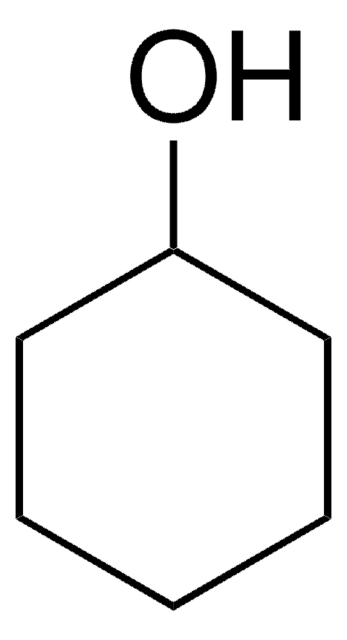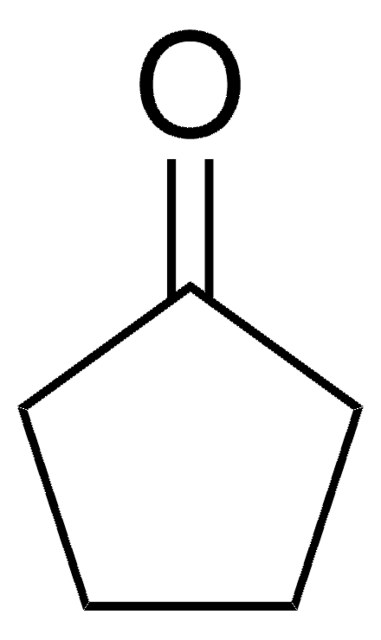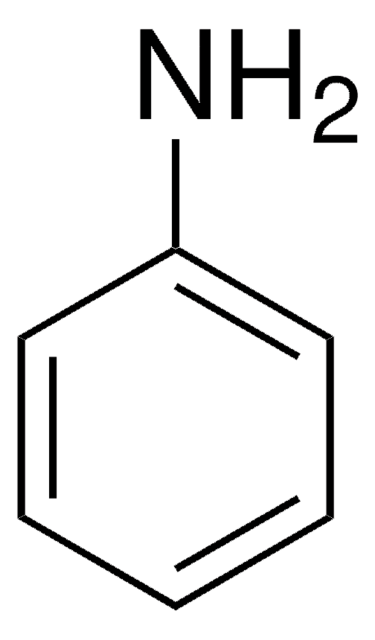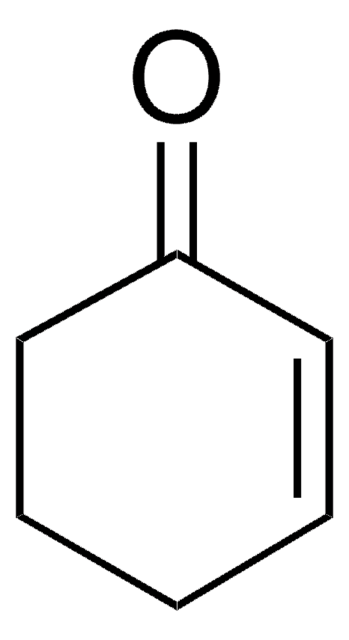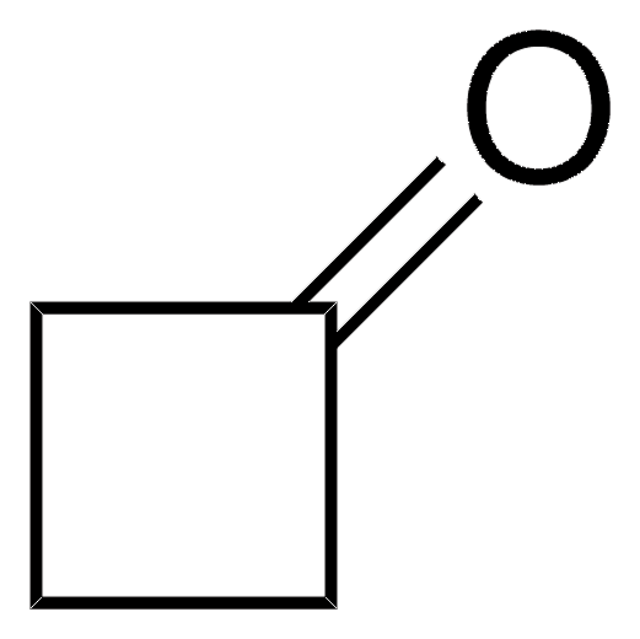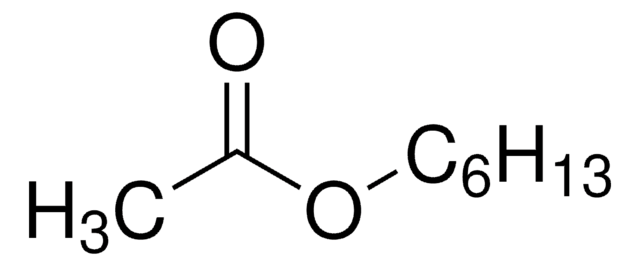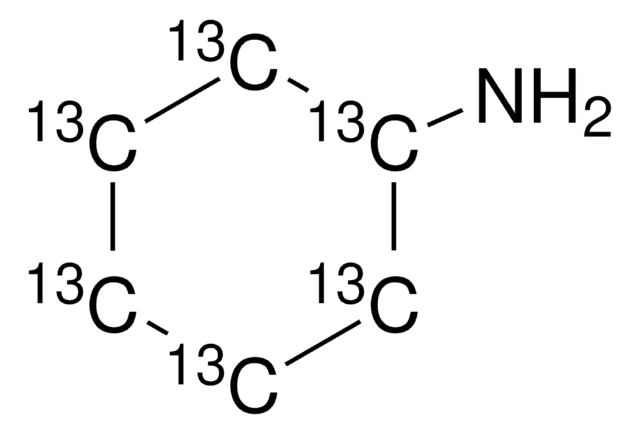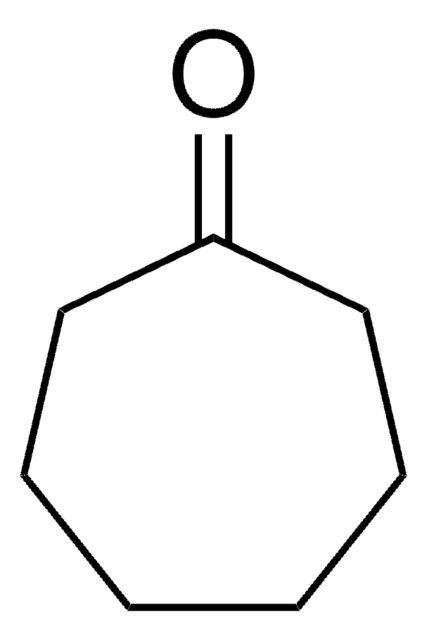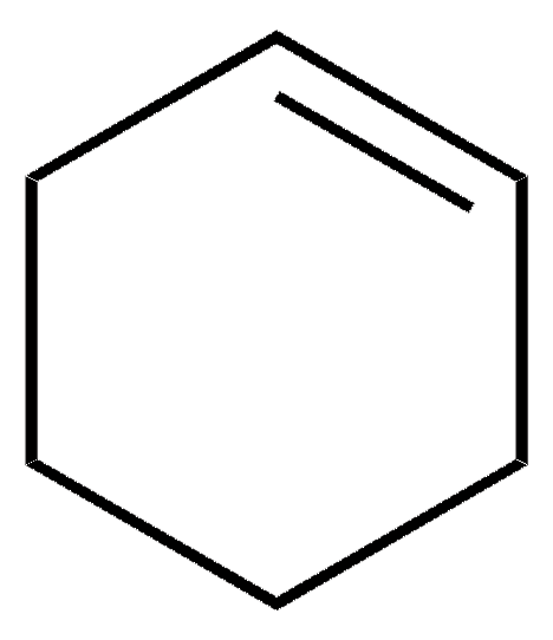398241
Cyclohexanone
ACS reagent, ≥99.0%
Sinonimo/i:
pimelic ketone
About This Item
Prodotti consigliati
Grado
ACS reagent
Livello qualitativo
Densità del vapore
3.4 (vs air)
Tensione di vapore
3.4 mmHg ( 20 °C)
Saggio
≥99.0%
Forma fisica
liquid
Temp. autoaccensione
788 °F
Limite di esplosione
1.1 %, 100 °F
9.4 %
Impurezze
≤0.05% water
Residuo dopo evaporazione
≤0.05%
Colore
APHA: ≤10
Indice di rifrazione
n20/D 1.450 (lit.)
P. eboll.
155 °C (lit.)
Punto di fusione
−47 °C (lit.)
Densità
0.947 g/mL at 25 °C (lit.)
Gruppo funzionale
ketone
Stringa SMILE
O=C1CCCCC1
InChI
1S/C6H10O/c7-6-4-2-1-3-5-6/h1-5H2
JHIVVAPYMSGYDF-UHFFFAOYSA-N
Cerchi prodotti simili? Visita Guida al confronto tra prodotti
Descrizione generale
Applicazioni
- Application in polymer physicochemical properties: Research highlights the utility of cyclohexanone in developing Poly(vinylidene fluoride) aerogels, emphasizing its role in manipulating polymorphic structures to tune physicochemical characteristics for advanced applications (Suresh et al., 2024).
Avvertenze
Danger
Indicazioni di pericolo
Classi di pericolo
Acute Tox. 4 Dermal - Acute Tox. 4 Inhalation - Acute Tox. 4 Oral - Eye Dam. 1 - Flam. Liq. 3 - Skin Irrit. 2 - STOT SE 3
Organi bersaglio
Respiratory system
Codice della classe di stoccaggio
3 - Flammable liquids
Classe di pericolosità dell'acqua (WGK)
WGK 1
Punto d’infiammabilità (°F)
111.2 °F - closed cup
Punto d’infiammabilità (°C)
44 °C - closed cup
Dispositivi di protezione individuale
Eyeshields, Faceshields, Gloves, type ABEK (EN14387) respirator filter
Scegli una delle versioni più recenti:
Possiedi già questo prodotto?
I documenti relativi ai prodotti acquistati recentemente sono disponibili nell’Archivio dei documenti.
I clienti hanno visto anche
Articoli
The Baeyer-Villiger oxidation is the oxidative cleavage of a carbon-carbon bond adjacent to a carbonyl, which converts the ketones to esters and the cyclic ketones to lactones.
Il team dei nostri ricercatori vanta grande esperienza in tutte le aree della ricerca quali Life Science, scienza dei materiali, sintesi chimica, cromatografia, discipline analitiche, ecc..
Contatta l'Assistenza Tecnica.
